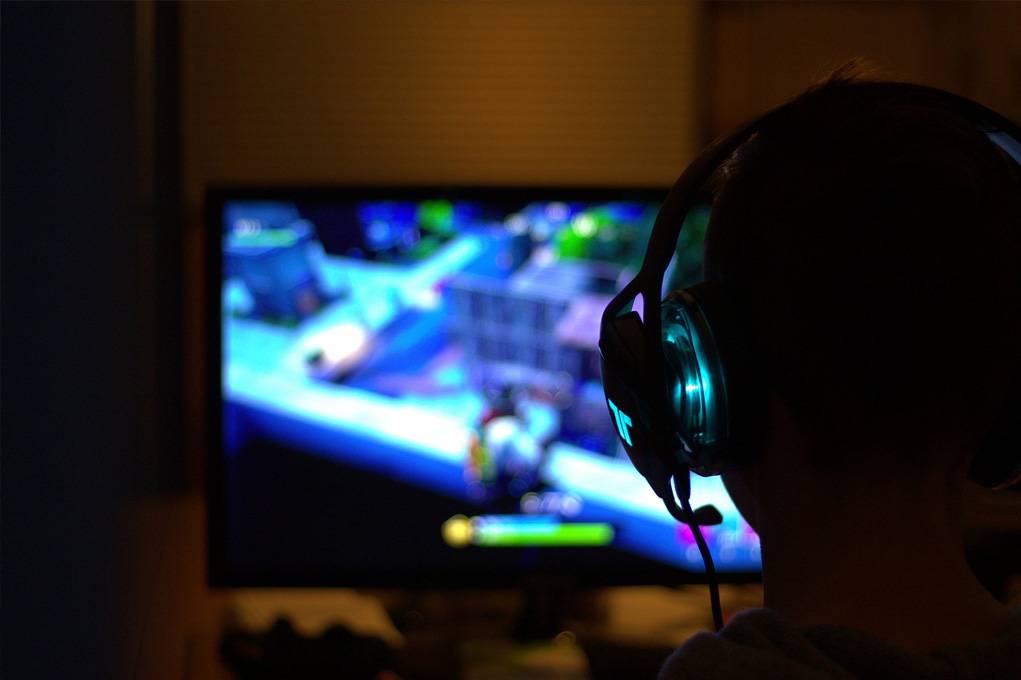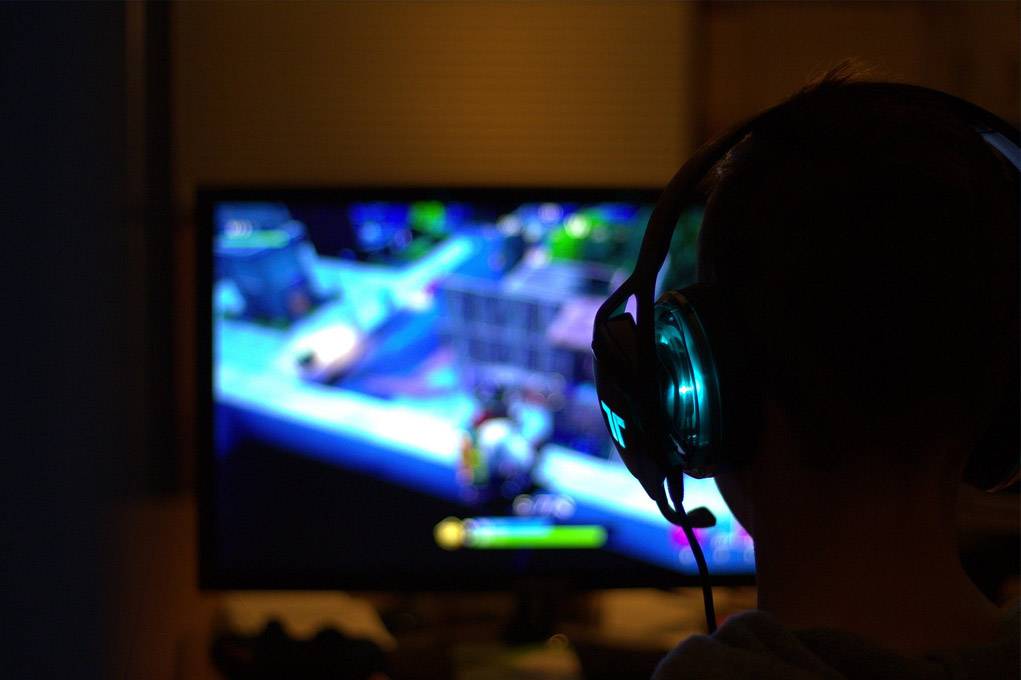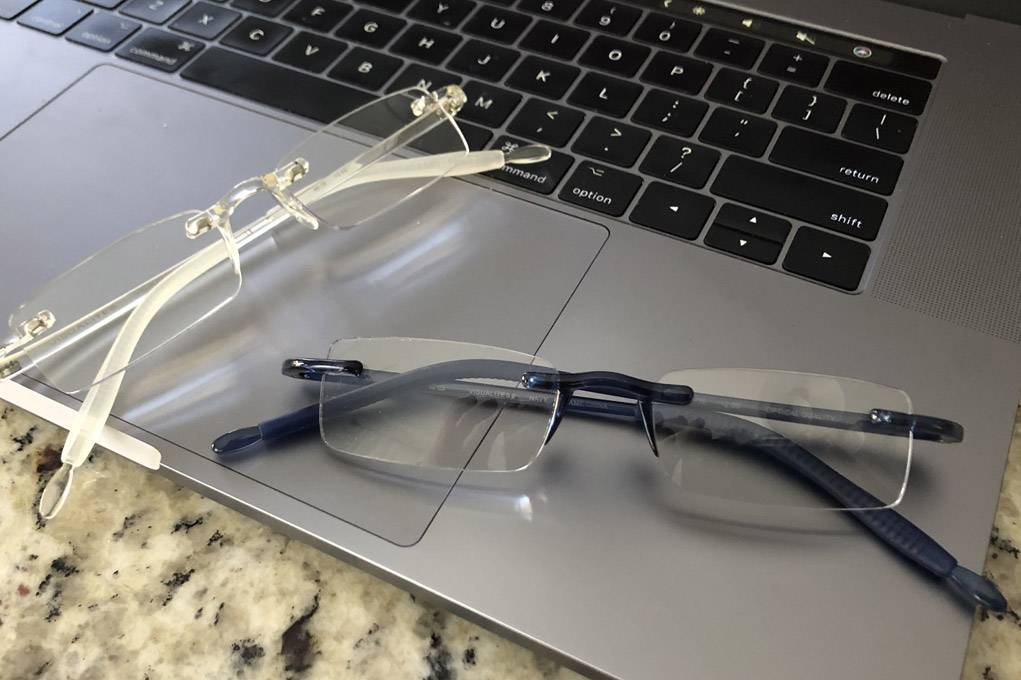
What is Digital Eye Strain?
Learn more about digital eye strain and other vision issues at Visualites
According to The Vision Council, an independent group of eye doctors comprised of optometrists and ophthalmologists, the average American now spends 7.5 hours in front of a screen every day. With this increase in digital device use many individuals suffer from symptoms of digital eye strain after screen use for longer than two hours at a time.
That tired and strained feeling your eyes have after spending a few hours of looking at a computer screen may be Digital Eye Strain, also known as Computer Vision Syndrome. This eye strain, eye irritation and associated headaches may be caused by looking at digital devices for as little as two hours a day, while these symptoms become intensified with the 7 plus hours many of us spend every day. Whether using a smart phone, tablet or laptop the range of symptoms that people experience can include some or all of the following:
- Tired and fatigued eyes
- Neck/shoulder/back pain
- Headaches
- Blurry vision / double vision
- Eye strain
- Eye discomfort
- Dry, itchy, and irritated eyes
Computer users may experience the effects of Computer Vision Syndrome differently. Some people may experience all the symptoms while others may only experience one. For instance, those who have a broader range of Computer Vision Syndrome / Digital Eye Strain symptoms may feel that their eyes are regularly and noticeably tired at the end of the day versus having those symptoms sporadically.
Digital Eye Strain Statistics from the Vision Council of the United States.

- 32.4 percent report experiencing eye strain
- 27.2 percent report experiencing dry eyes
- 27.7 percent report experiencing headaches
- 27.9 percent report experiencing blurred vision
- 35 percent report experiencing neck and shoulder pain
So what exactly causes this strain on the eye when using digital devices?
The Role of Blue Light in Digital Eye Strain
With the increase in use of digital devices, computers, laptops, tablets and smart phones our eyes are being exposed to significantly more blue light than they are accustomed too. We use digital devices at work, for entertainment, to learn and more
What is Blue Light?
Digital devices emit an unnatural blue light. Blue light is a term that refers to high energy, visible light that occupies the upper end of the part of the light spectrum that we can see, very close to light in the UV spectrum. Light rays with longer wave lengths produce less energy whereas light rays with short wavelengths have more energy.
Rays on the red end of the visible light spectrum have longer wavelengths and, therefore, less energy. Rays on the blue end of the spectrum have shorter wavelengths and, yes, you guessed it, lots and lots of energy.
Color often is a function of which end of the ***light spectrum the wavelengths are found. For example, the color blue is associated with short wave lengths and higher energy, whereas red tends to have a longer wave length and carries less energy (to me this seems counter intuitive, since red is a more “exciting” color. When the wavelengths are at their shortest that is still visible, we call this violet or blue-violet light. Ultra violet is the description of light that has waves so short that they fall outside the range of our vision. Blue light flickers easier and longer than other types of weaker wavelengths and this flickering casts a glare that reduces your visual contrast, affecting clarity and sharpness.
In addition, as pointed out by this article in the Harvard Medical Review, the negative effects of blue light don’t stop there. Blue light also can interfere with the secretion of an important sleep-regulating hormone called melatonin. In addition to suppression of melatonin production prolonged exposure to blue light during the evening can delay the **circadian phase, meaning it can push back the body’s natural tendency to fall asleep and wake up, leading to a misalignment between one’s internal clock and the external day-night cycle. Digital screen time at night can make it harder to fall asleep and can also degrade the quality of our sleep.
Some studies in animals have shown correlation between heavy blue light exposure and retinal damage. In some cases this can mimic an age-related condition known as *macular degeneration. Since we protect our skin and eyes from UV radiation, it would make sense to have some protection from short wave blue light.

What Can You Do to Mitigate the Effects of Digital Eye Strain?
As reading glass specialists, we are intently interested in this topic. After all, much of your online activity does involve reading.
In our next post on this topic will outline practical tips for reducing exposure to blue light, but also to lessen the harmful effects of blue light. If you can’t wait until our next post to take action, check out our recently arrived blue light filtering computer reading glasses.
Digital Eye Strain is truly the vision issue of our generation – But you don’t have to be a victim of it.
Try whichever of the following Visualites Blue Light Blocking Glasses that fits you best and protect your eyes and your sleep.
Visualites C: Blue Light Blocking Reading Glasses in a full range of powers up to 3.50
Visualites G: Blue Light Blocking Gaming Glasses with no magnification or a slight magnification in the 0.50 or 0.75
Visualites P: Blue Light Blocking Glasses without magnification
Summary
- The average American spends 7.5 hours a day in front of screens, leading to digital eye strain.
- Digital eye strain, or Computer Vision Syndrome, can result from as little as two hours of daily screen use and is intensified with longer durations.
- Symptoms of digital eye strain include tired and fatigued eyes, neck/shoulder/back pain, headaches, blurry vision, eye discomfort, dry and itchy eyes.
- Statistics show that many Americans report experiencing these symptoms, including eye strain, dry eyes, headaches, blurred vision, and neck and shoulder pain.
- Blue light emitted by digital devices plays a significant role in digital eye strain.
- Blue light is high-energy, visible light that is emitted by screens and can disrupt sleep patterns by interfering with melatonin production.
- Prolonged blue light exposure may lead to retinal damage, potentially mimicking age-related macular degeneration (AMD), which can cause vision loss.
- Taking steps to reduce blue light exposure, such as using blue light filtering glasses, can help mitigate the effects of digital eye strain and protect eye health.
* Macular degeneration, also known as age-related macular degeneration (AMD), is a medical condition that affects the macula, which is the central part of the retina in the eye. The macula is responsible for sharp, central vision, allowing us to see fine details and perform tasks such as reading and recognizing faces. The macula is a small, specialized area in the central part of the retina at the back of the eye.
** Circadian rhythms are 24-hour, internal biological processes that regulate various bodily functions, including sleep-wake cycles, hormone secretion, and body temperature. These rhythms are influenced by external cues like light and darkness, synchronizing our bodies with the day-night cycle. The suprachiasmatic nucleus in the brain’s hypothalamus serves as the body’s internal clock, governing these rhythms. Disruptions to circadian rhythms, such as shift work or jet lag, can lead to health issues, impacting mood, metabolism, and overall well-being. Understanding and maintaining healthy circadian rhythms is crucial for optimal physical and mental performance, as well as overall health.
*** The light spectrum, also known as the electromagnetic spectrum, consists of a range of electromagnetic waves of varying wavelengths. It includes all types of electromagnetic radiation, from the shortest gamma rays to the longest radio waves. Light, as we perceive it, falls within a specific portion of this spectrum.






